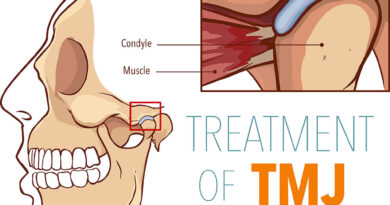How Do Chiropractors Know Where To Adjust
What Is Chiropractors?
Chiropractors believe that many health issues and pain result from misalignments or abnormalities in the musculoskeletal system, especially the spine. They use various techniques, including spinal adjustments, joint manipulation, and other manual therapies, to correct these misalignments and improve the body’s overall function.
Chiropractic care typically involves a comprehensive assessment of a patient’s condition, which may include physical examinations, medical history review, and diagnostic imaging tests if necessary. Based on the findings, chiropractors develop treatment plans tailored to the individual needs of their patients. Treatment may involve manual adjustments, spinal manipulations, soft tissue therapies, exercises, and lifestyle advice.
How Do Chiropractors Know Where To Adjust ?
Chiropractors use various methods to determine where to adjust a patient’s spine or joints.
Here are some common techniques they may employ:
- Patient History: Chiropractors typically begin by taking a detailed patient history. They ask questions about the patient’s current symptoms, previous injuries or surgeries, medical conditions, lifestyle, and overall health. This information helps chiropractors understand the patient’s specific concerns and potential underlying causes.
- Physical Examination: Chiropractors conduct a thorough physical examination, which may involve assessing the patient’s posture, range of motion, muscle strength, flexibility, and neurological function. They use their hands and sometimes specialized tools to palpate or feel the patient’s spine and other joints, looking for areas of tenderness, swelling, muscle spasms, or restricted movement.
- Diagnostic Imaging: In some cases, chiropractors may request diagnostic imaging tests such as X-rays, MRI scans, or CT scans. These images provide detailed information about the patient’s bones, joints, and soft tissues. Chiropractors use them to identify any structural abnormalities, fractures, disc herniations, or other conditions that may impact their treatment approach.
- Motion Analysis: Chiropractors may observe how a patient moves during various activities. This can include walking, bending, or performing specific exercises. By evaluating movement patterns and identifying any asymmetries or compensations, chiropractors gain insights into areas of dysfunction that may require adjustment.
- Palpation: Chiropractors have a highly developed sense of touch and use palpation to assess the alignment, mobility, and tension of the patient’s spine and joints. They feel for areas of misalignment, joint dysfunction, or muscle imbalances. Palpation helps chiropractors locate specific areas that may require adjustment or manual manipulation.
Based on the information gathered from these assessments, chiropractors develop a diagnosis and treatment plan tailored to the individual patient. The adjustments they perform are aimed at restoring proper joint function, alleviating pain, improving range of motion, and promoting overall wellness. It’s important to note that chiropractic techniques and approaches may vary among practitioners, and they may also incorporate additional diagnostic methods or tools based on their training and expertise.
How do chiropractors know where to push?
- Evaluation of Patient: Chiropractors use the methods mentioned earlier, such as patient history, physical examination, and palpation, to assess the patient’s condition. By identifying areas of restricted movement, misalignment, or muscle tension, they gain insight into the areas that may require adjustment.
- Subluxation Detection: Chiropractors often focus on detecting subluxations, which are misalignments or dysfunctions in the spine or other joints. They may feel for joint fixations or areas of abnormal movement during palpation, identifying the specific vertebrae or joints that need attention.
- Joint Analysis: Chiropractors have a deep understanding of joint mechanics and how different joints in the body are supposed to move. Through their training, they learn about the normal range of motion, joint surfaces, and the biomechanics of various joints. This knowledge helps them identify areas of joint dysfunction and determine the appropriate direction and amount of force to apply during an adjustment.
- Feedback from the Patient: Chiropractors often rely on feedback from the patient during the adjustment process. Patients may provide information about their comfort levels, pain response, or changes in symptoms. This feedback allows chiropractors to modify their approach and ensure that the applied force is appropriate and effective.
- Individualized Treatment Plans: Chiropractors develop individualized treatment plans based on their assessments and the specific needs of each patient. They take into account factors such as the patient’s age, overall health, specific conditions or injuries, and the goals of treatment. This personalized approach helps chiropractors determine the areas and techniques that will be most beneficial for each individual.
It’s worth noting that chiropractors undergo extensive training and education to develop the necessary skills and knowledge for performing adjustments safely and effectively. They are trained to identify and prioritize areas that require adjustment and apply the appropriate techniques to promote optimal joint function and overall well-being.
What do chiropractors feel for when adjusting?
When chiropractors perform adjustments, they primarily rely on their sense of touch and feel for various factors in the patient’s body.
Here are some key things chiropractors may feel for during an adjustment:
- Joint Fixations: Chiropractors assess the movement and alignment of joints, particularly in the spine. They use their hands to feel for areas where the joints may be fixated or not moving properly. These fixations can be detected through palpation, where chiropractors sense for areas of increased tension, stiffness, or restriction in joint motion.
- Muscle Tension: Chiropractors also feel for muscle tension or tightness around the joints they are examining. Palpating the muscles helps them identify areas of muscular imbalance or spasm that may contribute to joint dysfunction or pain.
- Misalignments: Chiropractors use their hands to detect misalignments or subluxations in the spine or other joints. They feel for any asymmetries, shifts, or irregularities in the alignment of the vertebrae or other bones. These misalignments can cause nerve interference, restricted movement, and discomfort.
- Tissue Texture Changes: By palpating the soft tissues surrounding the joints, chiropractors can feel for any abnormalities in tissue texture, such as swelling, edema, or inflammation. Changes in tissue texture can indicate areas of dysfunction or injury.
- Joint Mobility: Chiropractors assess the mobility of joints during palpation. They feel for the degree and quality of movement within a joint. Restricted movement or abnormal motion patterns may suggest joint dysfunction or misalignment.
- Patient Feedback: Chiropractors also pay attention to the patient’s verbal and non-verbal feedback during the adjustment. They listen for any indications of pain, discomfort, or changes in symptoms. Patient feedback helps chiropractors adjust their technique and ensure the treatment is well-tolerated and effective.
By combining these palpation skills and their knowledge of anatomy and biomechanics, chiropractors can identify areas that require adjustment and determine the appropriate technique and amount of force to apply. The goal is to restore proper joint function, relieve pain, and promote optimal nervous system functioning.
What are red flags in chiropractic?
In the context of chiropractic care, “red flags” refer to signs or symptoms that may indicate the presence of a serious underlying condition that requires further medical evaluation or intervention. These red flags suggest the need for caution or referral to a healthcare professional outside the scope of chiropractic practice.
Here are some examples of red flags in chiropractic:
- Severe or Progressive Neurological Symptoms: Symptoms such as sudden or severe onset of weakness, numbness, tingling, or loss of sensation in the arms, legs, or other body parts may indicate a serious neurological condition. This could include spinal cord compression, nerve impingement, or conditions like cauda equina syndrome.
- Bowel or Bladder Dysfunction: Difficulty controlling bowel or bladder function, urinary or fecal incontinence, or significant changes in bowel or bladder habits can be signs of a spinal cord injury, nerve compression, or other serious conditions that require immediate medical attention.
- Recent Trauma or Injury: If a patient has recently experienced a significant trauma, such as a car accident, fall from a height, or sports injury, it is important to consider the possibility of fractures, dislocations, or other severe injuries that may require medical imaging and evaluation.
- Fever or Systemic Infection: The presence of fever, chills, unexplained weight loss, or other systemic symptoms may indicate an underlying infection, such as spinal infection (discitis or osteomyelitis), which requires prompt medical assessment and treatment.
- Progressive or Worsening Pain: Pain that is worsening over time, particularly if it is unrelenting, severe, or not responding to conservative treatments, could indicate a more serious condition, such as tumor, infection, or inflammatory disorder.
- History of Cancer: Patients with a history of cancer who present with new or unexplained pain, especially if it is not consistent with their previous symptoms, should be evaluated to rule out the possibility of metastatic disease or other cancer-related complications.
It’s important to note that while chiropractors are trained to identify and manage various musculoskeletal conditions, they are also trained to recognize these red flags and refer patients for further evaluation or collaborate with other healthcare professionals when necessary. Chiropractors prioritize patient safety and well-being, and the presence of red flags prompts them to take appropriate action to ensure the patient receives the appropriate care.
Can I adjust myself like a chiropractor?
It is generally not recommended for individuals to attempt self-adjustments like a chiropractor. Chiropractors undergo extensive education and training to develop the necessary knowledge, skills, and experience to safely perform adjustments. Trying to adjust yourself without proper training and understanding of anatomy can carry risks and may lead to further injury or complications.
Here are a few reasons why self-adjustments are discouraged:
- Lack of Expertise: Chiropractors receive years of education and hands-on training to learn about the complex biomechanics of the body, including the spine and joints. They develop the skills to identify specific areas that require adjustment and apply appropriate techniques safely. Without this expertise, attempting self-adjustments can be ineffective or potentially harmful.
- Specificity and Precision: Chiropractors apply specific techniques tailored to each patient’s needs. They consider factors like the patient’s condition, medical history, and current symptoms. Adjustments are targeted to address specific joint dysfunctions or misalignments. Attempting self-adjustments without proper knowledge may result in incorrect or excessive force applied to the wrong areas, leading to further problems.
- Risk of Injury: The spine and other joints are delicate structures, and improper manipulation can cause injury. Without the proper training, you may unintentionally strain or sprain muscles, strain ligaments, or even cause fractures or nerve damage. This risk is amplified when trying to manipulate your own spine or neck, as these areas are particularly sensitive.
- Underlying Conditions: Attempting self-adjustments without a proper assessment from a healthcare professional may overlook underlying conditions or injuries that require medical attention. Some conditions, such as fractures, tumors, infections, or inflammatory disorders, may be exacerbated by improper adjustments. It is crucial to have a professional evaluation to rule out any potential contraindications.
If you are experiencing discomfort or seeking relief, it is best to consult with a qualified chiropractor or other healthcare professional. They can perform a comprehensive evaluation, provide appropriate treatment, and guide you towards exercises or stretches that may help alleviate your symptoms. Your safety and well-being should always be the top priority when it comes to your healthcare.




